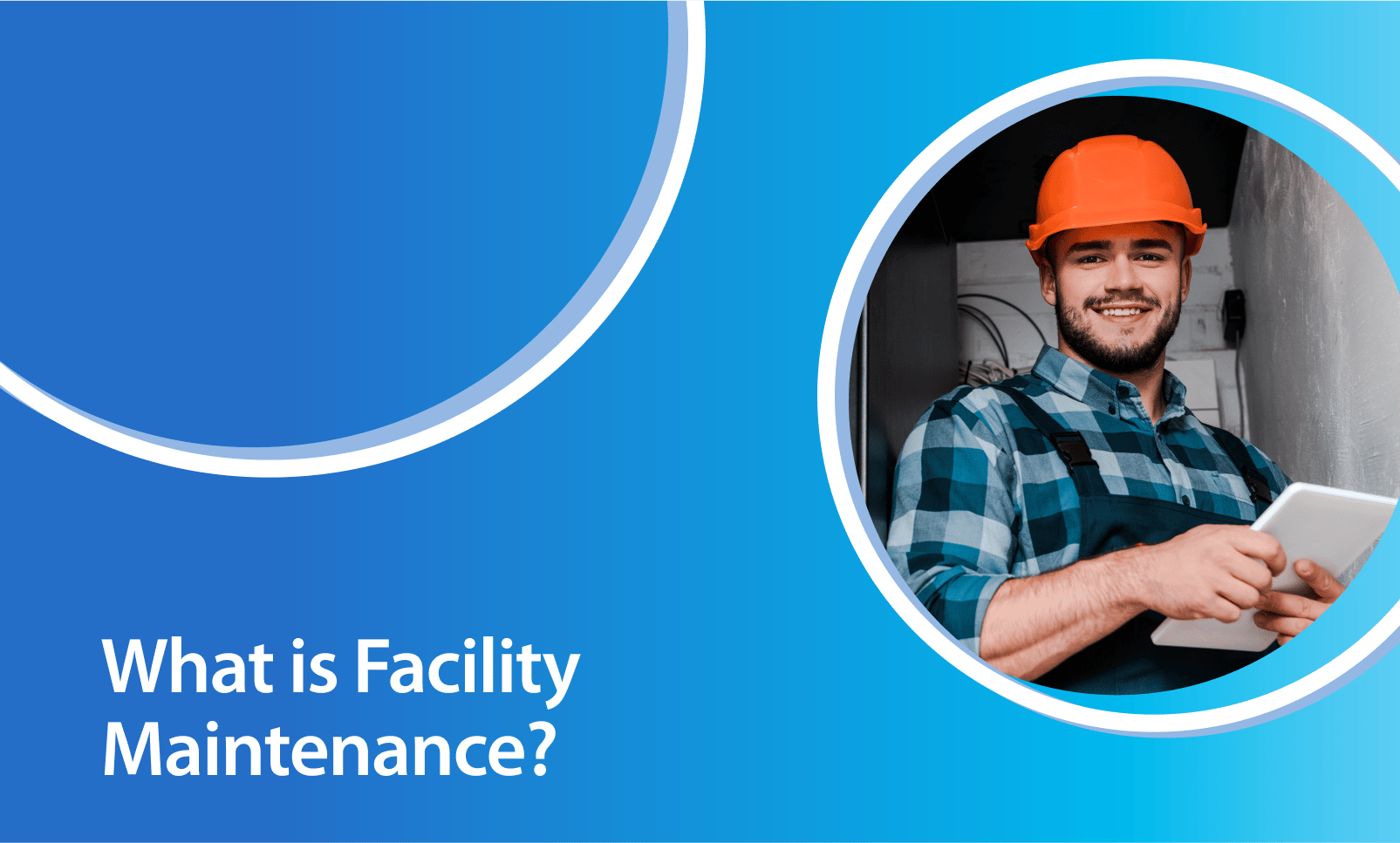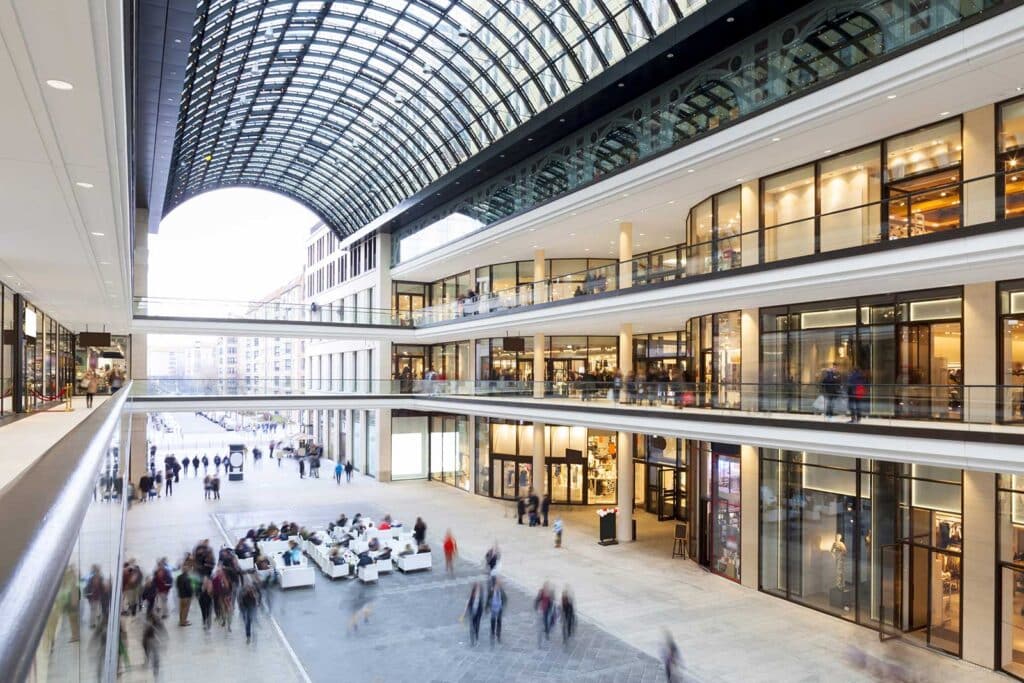What is Facility Maintenance?

Facility maintenance involves everything you need to get the most out of your commercial facility’s building infrastructure and physical assets for the longest period. On average, you can avoid 44% of unscheduled downtime with proper facility maintenance.
Proper facility maintenance also affects production time, capacity, and overall costs of running your facility. Let’s dive more into this topic and see how you can significantly increase your facility’s uptime.
What Does Facility Maintenance Include?
Your facility maintenance system includes all the people, tools, and processes needed to keep your facility’s equipment and building in top shape. Based on facility maintenance best practices, you want your plan to cover the following:
Building Systems and Infrastructure
Building systems and infrastructure maintenance include office equipment, plumbing, electrical systems, fire safety systems, pest control, and HVAC units. All of these assets are crucial for both the safety and convenience of your commercial buildings’ tenants.
Interior Spaces
Interior space maintenance involves your facility’s paint jobs, windows, doors, and decor. Facility maintenance professionals and technicians can handle the work directly. However, most facilities managers prefer hiring a third-party service for these tasks. This way, they can focus on more critical facility maintenance tasks, such as working on fire suppression systems and elevators.
Grounds and Exterior Maintenance
Ground and exterior maintenance includes everything that makes your building’s surroundings safe and attractive. Your maintenance technician may perform upkeep on your parking lots, yards, and walkways. This type of property maintenance also includes clean-up tasks like leaf and snow removal.
Safety and Security
Facility and maintenance managers and workers also must ensure that regulatory health and safety standards are consistently upheld. Required maintenance tasks include safety testing, risk assessments, and regular staff training by facilities maintenance professionals.
Types of Facility Maintenance Applications
Preventive Facility Maintenance
Preventive facility maintenance occurs regardless of the asset’s condition. This process aims to reduce equipment downtime, lower maintenance costs, lengthen asset lifespans, and improve safety. It also benefits facility managers because it helps them save on costly repairs and replacements.
For example, a hospital would use preventive maintenance to keep its essential medical equipment, like MRI machines, working safely and efficiently. In this case, the hospital’s facility manager would schedule routine imaging equipment for maintenance, and the facility maintenance team would perform these tasks on a schedule. Doing so prevents unexpected equipment breakdowns that could compromise patient safety.
Reactive Facility Maintenance
Reactive facility maintenance involves responding to equipment downtime when it occurs to restore normal operations. Most facilities will have to perform reactive maintenance or emergency repairs at some point or another. However, it’s important to keep such incidents minimal. Relying solely on reactive maintenance is unsustainable due to its high costs and workflow interruptions.
This form of facility maintenance is the easiest to picture. For instance, if your building’s central heating breaks down in the middle of winter, your own facility management professional would quickly call technicians to restore it so you can keep your tenants warm.
Planned Maintenance vs. Reactive Maintenance
Most facility managers use facility management software to automate their maintenance schedules.
There are several facility maintenance strategies split into two major categories. These are proactive maintenance strategies and reactive maintenance strategies. The most common strategies in these categories include preventive and reactive.
Planned Facility Maintenance
Planned facility maintenance is similar to preventive maintenance. It also involves all scheduled maintenance activities performed regardless of an asset’s condition. The primary difference is that it strategically focuses on which issues are most likely to occur. Comparatively, preventive maintenance is like a “check-up” on the asset’s entire system.
For example, the facility manager of a shopping mall may notice that its escalators are at a high breakdown risk due to usage and historical trends. Based on this data, the mall’s facility maintenance manager, would prioritize routine maintenance on these escalators.
Corrective Facility Maintenance
Corrective maintenance is another term for reactive facility maintenance. It also involves correcting a fault in an asset so that it may return to its normal operational functions. It could be as simple as unclogging a clogged toilet in your bathroom or performing a major repair on manufacturing machinery.
Facility Maintenance vs. Facility Management
Despite being used interchangeably, facility maintenance and facility management are two concepts. However, there is some overlap.
Facility management involves managers who keep a facility running, profitable, and efficient. These facility management teams support the equipment and workers in the facility. Facilities managers also plan the future of workers, equipment, and infrastructure in the short and long term.
On the other hand, facility maintenance involves keeping the facility operational, maintained, and efficient. It focuses on the processes of maintaining the facility, its tools, and equipment. Facility maintenance sometimes overlaps with management, especially with high employee turnover.
Facility management also encompasses facility maintenance. For instance, a facilities manager may oversee the maintenance of a building, equipment maintenance, or a maintenance team while also handling building administration tasks such as cleaning or housekeeping.
Why is Facility Maintenance Important?
Regular facility maintenance is what keeps your building and equipment safe and functional. It’s also what prevents accidents and discomfort among your staff and patrons. Still, there are many other benefits of facility maintenance.
Increased Facility Asset Lifespans
The more well-maintained your asset is, the longer its useful life will be. As a result, you can drastically reduce replacement costs for capital assets, receive more returns for your investment, and increase each asset’s salvage value upon depreciation.
Reduced Downtime
Equipment downtime is inconvenient and costly. It may even be dangerous in some cases, such as healthcare facilities. A solid preventive maintenance program helps you avoid such emergencies.
Optimized Workflows and Cost Tracking
Knowing exactly when and how maintenance activities will occur makes it much easier to plan and optimize work schedules and budget around these tasks. Modern CMMS software can also automate facility maintenance, making it easier to optimize workflows and track costs without manual paperwork.
Tenant Satisfaction
If a facility’s daily operations run smoothly, the tenants are more likely to be satisfied and work more effectively for the organization within the facility. This results in better production and greater satisfaction throughout the facility.
Focus on Other Priorities
Once you’ve implemented a proper facility maintenance program, you can focus on other business areas, such as investing in new technology, employee engagement, or scaling operations. Since you’ll be spending less time on repairs, you’ll also have additional time for all of these functions.
How to Maximize Your Facilities’ Maintenance Operations
No matter the facility maintenance strategy you adopt, maximizing maintenance work operations will get the most out of your selected system. You may need to upgrade your equipment and assets for long-term success and efficiency. More efficient models of equipment and assets make maintenance easier and more cost-effective.
Give your facility management team the gift of ServiceChannel. Our maintenance software is one of the top CMMS facility management solutions. Use it to uphold best practices, schedule equipment maintenance, and streamline building maintenance tasks.
Book your free demo today to discover what your maintenance departments could be missing.


